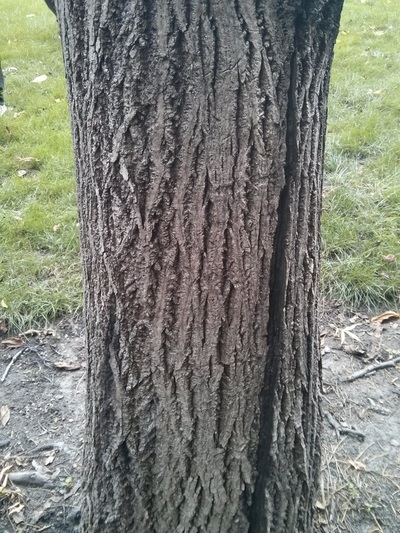Common Name: butternut
Scientific Name:
Family: Juglandaceae
Genus: Juglans
Species: J. cinerea
Hardiness Zone: 3 to 7
Height: 40 to 60 ft
Width: 40 to 60 ft
Common Characteristics:
This mid to large-sized tree with a long straight trunk. The bark is light gray and smooth, becoming rough and furrowed. The leaves are pinnately compound with 11-17 leaflets. The leaflets are broadly lance-shaped with a point at the tip and finely serrated margins. The foliage is yellow-green above and paler underneath with soft hairs. Fall foliage is a yellow or brown color. The twigs on butternut are brown and stout with sticky hairs. The butternut produces edible nuts that are enclosed in an ellipsoidal husk covered in sticky, small hairs. The trees are becoming harder to find in their natural habitat due to butternut canker (Sirococcus clavigignenti-juglandacearum) having a devastating effect on their mortality. It was listed as an endangered species in Minnesota in 2013.
Where it Grows:
Butternut is common in mesic woods, and just above floodplains. It prefers average moist sites, needing full sun to establish. It does not do well in areas with poor drainage or acidic soils.
How it's Used:
Butternut wood can be used for cabinet lumber. The nuts are edible, oily, and go rancid fast so they must be harvested quickly. Indigenous people used oil from the nuts for many uses. The husks from the nuts have a brown stain that can be used for a yellow or orange dye.
Ecosystem services:
Butternut is a food source for birds, browsers, insect pollinators, and small mammals.
Where it is Native To:
The native growing range of the tree is the eastern United States, from Maine to Minnesota and Missouri, and down south to western South Carolina.
Problems:
Butternut canker is a fungus that has killed off a majority of the tree's population. This has led the tree to become not recommended for landscape use to prevent further spread of the fungus. Butternut produces a toxin called juglone, similar to black walnut, making it toxic to other plants.
References:
Minnesota Department of Natural Resources
Little, E. L. (n.d.). National Audubon Society Field Guide to North American Trees; Eastern Edition. (Original work published 1980)
